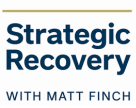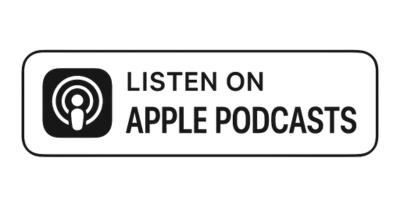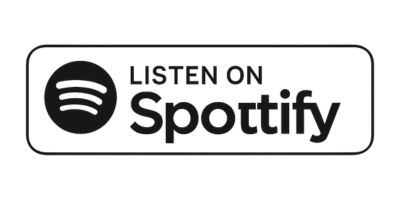For decades, addiction was explained in simple terms: “You made bad choices. You need more willpower. Just stop.”
Then the conversation shifted: “Addiction is a brain disease. It erodes dopamine. Over time, dopamine will heal.”
But even that explanation is incomplete. Dopamine is only one-quarter of the story.
The deeper truth is this:
Your brain runs on four primary classes of neurotransmitters — the mood-generating chemicals that determine how you feel, think, sleep, and cope with stress. I call them the Four Mood Tanks.
- Catecholamines (Stimulant Tank) → energy, focus, drive.
- Serotonin (Antidepressant Tank) → optimism, balance, peace.
- GABA (Tranquilizer Tank) → calm, relaxation, sleep.
- Endorphins (Painkiller Tank) → comfort, resilience, pleasure.
When these tanks are full, you feel alive, centered, and capable of facing life. When they’re empty, you feel exhausted, depressed, anxious, or raw — and cravings explode.
Addictive drugs work by forcing these tanks to flood temporarily. Alcohol, opioids, meth, benzos — each one is a counterfeit key that unlocks receptors unnaturally, giving short-lived relief but long-term depletion.
In this episode of Strategic Recovery, I’ll walk you through each of the four neurotransmitter systems, how addiction drains them, and how you can rebuild them naturally. You’ll also learn where I first discovered this framework (hint: Julia Ross’s The Mood Cure), how it explained my own strange behavior with alcohol substitutes in my 20s and 30s, and why mainstream treatment often overlooks three-quarters of the problem.
By the end, you’ll see addiction and recovery through a new lens — not as proof of weakness, but as a signal that your brain simply needs to be refueled.
The 4 Mood Tanks in Depth
1. Catecholamines (The Stimulant Tank)
Catecholamines — dopamine, norepinephrine, and adrenaline — are your “get up and go” chemicals. They fuel drive, motivation, excitement, and focus.
When this tank is full, you feel unstoppable. You wake up with energy, set goals, and pursue them with fire. You’re engaged with life.
When it’s empty, everything feels flat. You procrastinate, drift, and struggle to care. Even small tasks feel impossible.
How Drugs Hijack the Stimulant Tank
- Methamphetamine/amphetamine (Adderall) → flood dopamine and norepinephrine → extreme energy and focus → devastating crash and long-term depletion.
- Cocaine → blocks dopamine reuptake → artificial euphoria and confidence → rebound emptiness.
- Nicotine → smaller dopamine spikes → explains cigarettes’ stimulating “edge.”
These drugs don’t just boost mood. They hijack the system that fuels your very will to live. That’s why stimulant drugs create such intense highs and equally intense crashes.
My Story: Red Bull on the Rocks
When I tried to quit alcohol in my 20s, I still wanted to party with friends at concerts and bars. My solution? Red Bull on the rocks.
It seemed clever. I had a “drink” in my hand, but I wasn’t drinking alcohol. But beneath the surface, I was self-medicating with Valium combined with Percocet! My stimulant tank was fried from alcohol and stress, and I was trying to fake fuel it with caffeine and taurine. It worked for a few hours — then left me feeling emptier than before.
How to Refill the Stimulant Tank
- Nutrition: Tyrosine and phenylalanine (from protein foods) rebuild dopamine.
- Supplements: L-tyrosine, B-vitamins, iron, magnesium, omega-3s.
- Lifestyle: Exercise, novelty, creative projects, purpose-driven goals.
- Sleep: Dopamine receptor repair happens during deep sleep.
As Dr. Nora Volkow (NIDA director) said:
“Addiction is a disease of learning and memory, but it is also a disease of dopamine.”
Learning to refill dopamine is learning to rebuild motivation itself.
2. Serotonin (The Antidepressant Tank)
Serotonin is your natural mood stabilizer — the “stay steady” chemical.
When serotonin is full, you feel calm, content, optimistic, and resilient. Stress rolls off more easily. Sleep comes naturally because serotonin converts into melatonin.
When it’s empty, the world looks darker. Anxiety spikes. Depression sets in. Sleep gets wrecked. Negative thought loops play on repeat.
How Drugs Hijack the Antidepressant Tank
- MDMA (Ecstasy) → massive serotonin dump → bliss and empathy → “Suicide Tuesday” crash.
- LSD/psilocybin → activate serotonin receptors (esp. 5-HT2A) → altered consciousness.
- Alcohol → partially increases serotonin (that warm buzz), then disrupts it chronically.
This explains why depression and alcohol abuse often feed each other — alcohol gives a temporary serotonin lift but worsens deficiency long-term.
My Low Serotonin Years
In my drinking years, my moods were a rollercoaster. I wasn’t just “moody” — my serotonin tank was empty. Alcohol gave me a brief buffer, but the crash left me lower each time.
How to Refill the Antidepressant Tank
- Nutrition: Tryptophan (turkey, salmon, eggs, nuts, seeds).
- Supplements: Kanna, 5-HTP, vitamin B6, magnesium.
- Lifestyle: Sunlight, aerobic exercise, gratitude journaling.
- Connection: Belonging and love naturally boost serotonin.
As the Dalai Lama once said:
“Happiness is not something ready made. It comes from your own actions.”
One of those actions is living in ways that refill serotonin.
3. GABA (The Tranquilizer Tank)
GABA is the brain’s main inhibitory neurotransmitter — the brake pedal. It slows overactive circuits, eases tension, and promotes sleep.
When this tank is full, you feel grounded, calm, and able to rest. When it’s empty, you feel wired, anxious, restless, and sleepless.
How Drugs Hijack the Tranquilizer Tank
- Alcohol → binds to GABA-A receptors → sedation and anxiety relief → long-term depletion.
- Benzodiazepines (Valium, Xanax) → plug directly into GABA-A receptors → instant calm → dependence.
- Barbiturates → older, stronger GABA drugs.
Alcohol and benzos feel like magic to people low in GABA. But they drain the tank even further.
My GABA Substitutes
In my alcohol-free stretches, I leaned on Valium. Looking back, I wasn’t just “avoiding alcohol.” I was treating a GABA deficiency with another counterfeit key.
How to Refill the Tranquilizer Tank
- Nutrition: Glutamine, magnesium, taurine.
- Supplements: L-theanine, passionflower, valerian, kava.
- Lifestyle: Yoga, meditation, slow breathing, deep sleep.
Seneca once wrote:
“The mind should be allowed some relaxation — it will rise improved and sharper after a good break.”
GABA is that break.
4. Endorphins (The Painkiller Tank)
Endorphins are your natural opioids. They soothe pain and create comfort.
When this tank is full, you can handle stress, loss, and pain without being crushed. When it’s empty, every wound feels unbearable.
How Drugs Hijack the Painkiller Tank
- Opioids (heroin, oxycodone, fentanyl) → bind to mu opioid receptors → huge endorphin + dopamine spike.
- Alcohol → indirectly boosts endorphins.
- Exercise addiction or self-harm → release endorphins unnaturally.
My Opioid Kryptonite
The first time I took Percocet, it felt like a miracle. But it wasn’t. It was a counterfeit key unlocking a dry tank. The relief came with a price — deeper depletion.
How to Refill the Painkiller Tank
- Connection: Hugging, bonding, intimacy.
- Laughter & joy: Comedy, play, creativity.
- Exercise: The “runner’s high” is real.
- Nutrition: DLPA (DL-phenylalanine) slows endorphin breakdown.
- Acts of service: The “helper’s high” boosts endorphins.
Candace Pert, who discovered the opiate receptor, said:
“We’re all addicted to our own endorphins.”
When you learn to boost them naturally, you stop needing opioids to feel okay.
Metaphors: Dashboard & Orchestra
To make this framework practical, imagine two things:
- The Four Fuel Gauges on Your Dashboard → If even one tank runs low, your brain struggles. Two or three empty = cravings, relapse risk, and suffering.
- The Brain as a Symphony Orchestra → Catecholamines (brass), serotonin (strings), GABA (percussion), endorphins (choir). Together they create harmony. When one section is missing, the music feels off.
You’re not beyond repair. You’re simply in need of a refill, and that’s fully within your reach.
Supporting Players: Oxytocin & Glutamate
- Oxytocin (bonding hormone) → boosts connection, trust, intimacy. Raised by hugs, pets, prayer, kindness. Addiction thrives in isolation — oxytocin heals through connection.
- Glutamate (gas pedal) → critical for learning and craving. Addiction hijacks glutamate pathways. Mindfulness and neuroplasticity can rewire them.
Other players include acetylcholine (focus), histamine (wakefulness), and anandamide (the “bliss molecule” in the endocannabinoid system). But balance in the big four sets the tone.
Julia Ross & The Mood Cure
I first learned about the Four Mood Tanks through Julia Ross’s book The Mood Cure. She introduced me to the Mood Type Questionnaire, which showed exactly which tanks I was running low on.
Her books — The Mood Cure, The Diet Cure, The Craving Cure — remain some of the best resources for using nutrition and amino acids to repair neurotransmitters.
Find the questionnaire and resources at JuliaRossCures.com.
Mainstream Treatment vs. Strategic Recovery
Mainstream treatment often focuses only on dopamine.
Strategic Recovery addresses all four tanks.
Because recovery isn’t just abstinence. It’s about building a brain you love living in — with motivation, peace, resilience, and comfort.
As William James once said:
“The greatest discovery of my generation is that human beings can alter their lives by altering their attitudes of mind.”
In Strategic Recovery, we take it one step further:
The greatest discovery in recovery is that you can alter your mind by repairing your brain chemistry.
Practical Strategies: Refilling Your Tanks
- Nutrition: Whole foods, protein, amino acids, omega-3s, B-vitamins.
- Lifestyle: Sleep, movement, sunlight, connection.
- Supplements: Targeted amino acids (tyrosine, 5-HTP, DLPA, glutamine), minerals, adaptogens.
- Awareness: Daily “tank check” — energy (dopamine), mood (serotonin), calm (GABA), comfort (endorphins).
- Spiritual Practices: Gratitude, meditation, forgiveness, purpose.
Neurotransmitter repair isn’t about perfection. It’s about steady refills — day after day.
Closing: You Are the Conductor
Your brain is a symphony orchestra.
Your neurotransmitters are the instruments.
You are the conductor.
When addiction hijacks the system, the music goes out of tune. But when you learn to refill your tanks and balance your chemistry, the orchestra plays again — a symphony of recovery, resilience, and joy.
Your system isn’t ruined — it’s just depleted. And every day gives you the chance to refill the tanks.
Resources & Links
- Julia Ross’s Mood Type Questionnaire
- The Mood Cure, The Diet Cure, The Craving Cure by Julia Ross
- Strategic Recovery Podcast Archive
🎙️ Listen to Episode 16: The 4 Mood Tanks: How Neurotransmitters Drive Addiction, Cravings, and Recovery on Apple Podcasts, Spotify, and all major platforms.
🙏 Thank you for being part of the Strategic Recovery community.
Click Here and Right Click to Save As to Download>>






Leave a Reply